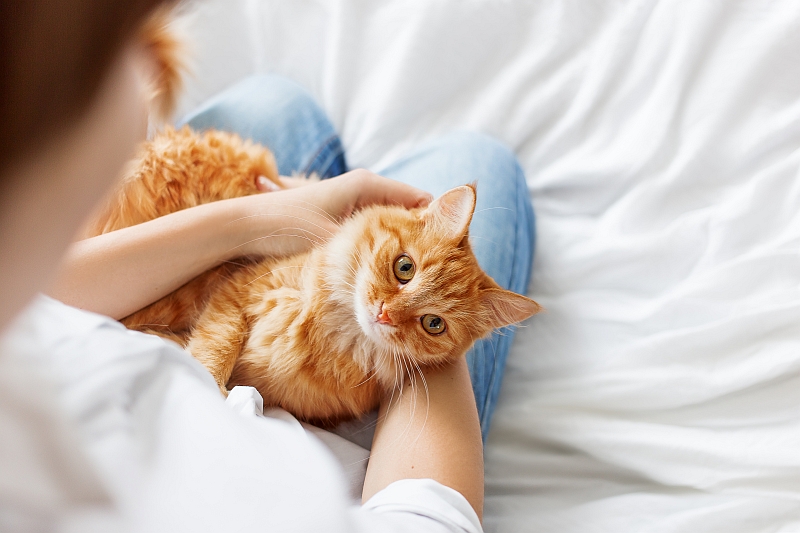When it comes to assessing a pet’s overall physical health, we will always recommend seeing a professional. Veterinarians have years of experience diagnosing disease, identifying symptoms, lifestyle concerns, and other elements of pet care which generally might escape our notice. However, during the months in between checkups, there may be heath concerns that arise which you will want to take a closer look at before your next appointment. Here is a quick rundown of what to look for while giving your cat an at-home physical exam.
Physical Exam To-dos
When assessing your pet’s overall wellness, here are some guidelines on how to tell if your cat’s body is healthy.
Eyes: They should be clear, without discharge, redness, or swelling. Look to see there is no yellowish tint in the whites of the eyes.
Nose: There should be no extra discharge, sniffling, lumps or bumps on or around the nose.
Ears: Check for odors, dirt, wax, or signs of dust mites and bleeding. While a small amount of wax is to be expected, see if there is any swelling, overproduction of ear wax. Feel around the ear for lumps, lesions, redness, or scratches that might risk infection.
Mouth: Note what color the gums are, as gum pigmentation might indicate toxicity levels or illness. There should be no bright redness, no swelling, or extreme saliva production. Check for scratches scrapes, lesions, or mouth ulcers.
Chin/Neck/Cheeks: Check to see that the skin is not agitated in any way, and that there is no acne or breakouts on the skin’s surface. (If this is the case, the fur might appear dirty.)
Skin/Coat: Pull the skin between the shoulders firmly, and then release it. See if the skin tends to stand up on its own, or if it quickly recedes. This might be an indication that the cat is under hydrated. If the skin is slow to snap back into place, make sure you help increase his intake of water. The coat should be glossy and well moisturized, indicating good internal health and epidermal strength.
Body: Using the “birds eye” observation method, check to see if your cat appears to be a healthy weight, or if he could be considered obese. To double check, run your hands along the head, back, underbelly, rump and limbs of the feline, to feel for any unfamiliar or new bumps or lumps under the surface. Note if this kind of contact causes your cat to wince, or move away from you, indicating that he is in pain.
Movement/mobility: Watch your cat as he walks, jumps, stands and lies down. Does he favor one side, avoid a certain leg, or seem uncomfortable when he moves? The gait should be even, balanced and steady if he is in good health.
Paws: Check to make sure the paw pads aren’t scuffed, swollen, or damaged in any way. If the claws are too long, trim them or buff them down.
By taking a review of your cat’s physical state, you will be more likely to notice when anything changes, which will help inform your vet on your next visit. Being consistent with doing these sort of home exams could end up saving your cat from health problems in the future.

